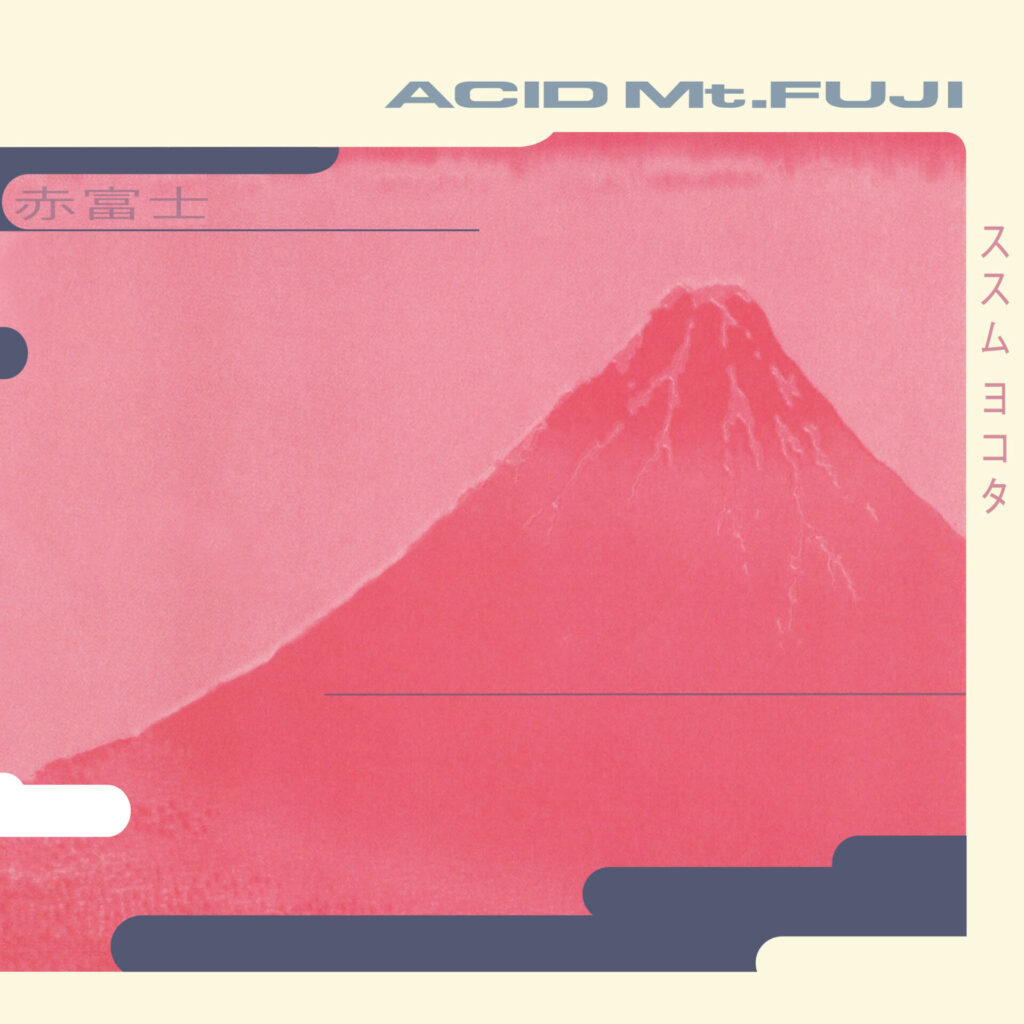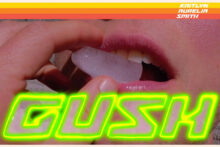The late Susumu Yokota built worlds within worlds. Intensely prolific, he released some thirty albums in the space of two decades, roaming from glistening ambient to levitating techno via mesmerising sample collages. Sometimes his music dialogued with traditional Japanese music, sometimes it was otherwordly, sometimes it seemed to grow from a hermetically sealed inner place. Often it was all three at once. However 1994’s Acid Mt. Fuji is an anomaly. One which communes with Detroit techno and acid house but imagines luminous machine music born in a pre-industrial, forested realm rather than an industrial heartland.
As well as his own name, Yokota deployed the aliases Ebi, Stevia and Tenshin. He was born in 1960, and prior to becoming a composer worked as an economist. When that changeover happened is muddy. From 1993 he released music on European labels such as Teddy and Harthouse, which placed him at the forefront of Japanese artists crossing into European club culture. In 1994 he played at Tresor in Berlin but he had been making tracks as early as 1983. These textural pieces seemingly have little in common with his dance music explorations of the mid-1990s. But they do seem inextricably connected to some of his work in the early 2000s. Which is to say, Yokota’s discography is impossible to try and plot a straight line through.
A rare interview with Louise Gray in The Wire in 1999 paints a picture of a genial, shy figure, albeit someone who was capable of delivering poignant explanations of his music. Talking about Image 1983-1999, a then recently released collection of his more textural works, he likens it to ‘kona’, the Japanese word for powder. “It is atmosphere that I’m interested in, it’s like powder. One breath – pfff – and it’s gone.”
Acid Mt. Fuji, Yokota’s second album under his own name, seems to come from a different world entirely to Image. But this kona quality, the focused attendance to atmosphere, can still be felt. Even if that atmosphere typically pounds rather than drifts. Opening track, ‘Zenmai’, lays a framework for the record. A synth line that sounds like it could be an electronic transcription of a koto melody, a gust of pristine bird sound, and a strident, rolling, skyward beat. On follower ‘Kinoko’, those wildlife sounds become more agitated. Birds squawk rather than chirp. A synth sounds like an elephant, and the whole thing evokes the serene rigour of a gagaku ceremony being translated for a dance floor.
Throughout the record Yokota’s music is utterly present, it triggers movement as much as immersion. But it’s also imbued with a fleeting quality. A sense that you’re hearing a temporary incursion into mundane reality. Whether it’s the warm glow and open possibilities of a club at its most liberatory, ancient traditions that are dissolving with the present, or a retreat to the countryside you know is going to end. On Acid Mt. Fuji, all those sensations cross into one.
This is backed up by the record’s cover. Drawn by Yokota, it references the artist known monomously as Hokusai and his nineteenth century woodblock print Fine Wind, Clear Morning, otherwise known as Red Fuji. It formed part of Hokusai’s Thirty-Six Views of Mount Fuji series. According to the reissue’s comprehensive liner notes, penned by DJ/producer Alex From Tokyo, Yokota initially intended the album to be an ambient record, before deciding to add beats. Lots of beats. It was recorded at home, using a sampler and a Roland TB-303 bass synthesizer. He added judicious recordings taken during walks in the forest. Like that cover image, the music on Acid Mt. Fuji reaches towards far off places and times. Communing with traditions local and global while also bending them.
Acid Mt. Fuji is of its moment and completely outside of it. Across the early 80s and 90s, club music from the US and Europe started to be imported into Japanese record stores and staking a greater presence in clubs and parties around the country. According to the reissue’s liner notes, Yokota was a regular attendee at the Zero party in Tokyo which invited international DJs to perform. Increasingly, record labels, radio shows and clubs started laying infrastructure for what was being imported be reinterpreted and expanded by Japanese producers. In 1993, Japan’s first techno club, Maniac Love, opened. Its artistic director, Manabu Yamazaki initiated the Sublime Parties, from which Sublime Records grew, an electronic focused imprint of the Musicmine label which initially released Acid Mt. Fuji on CD in 1994.
Before Acid Mt. Fuji, Yokota released a debut LP under his own name, The Frankfurt-Tokyo Connection in 1993, an album which sounds like its title would suggest, with a smidgeon of Detroit and Chicago thrown in. It was more explicitly club-focused than Acid Mt. Fuji, but the bonus tracks included with the latter’s reissue help bridge some of the gap. Predominantly unreleased tracks from the nineties, and a couple of live performances, those hoping to hear more material from the Acid Mt. Fuji space might be disappointed. If anything, they make clear just what an outlier the original album was while charting some of the journey that led Yokota from his first album to his second.
In the years between Acid Mount Fuji and Yokota’s death in 2015, his music wandered into an increasingly fluid space, or perhaps the music more fully realised and gave expression to a space which was always there – the Image compilation, full of meditative synth miniatures and tender guitar instrumentals, brings home that the dive into beats was only a small part of the worlds Yokota built. Either way, in his later years drum machines and bass synths were increasingly shifted from the foreground. 2004’s Symbol was a bewitching tapestry of samples from classical and avant-garde music. Around the same time he released an album and EP in collaboration with the British, triple bass wielding post-rockers Rothko. The results: a deeply sensuous, meditative sibling of trip hop.
This latest reissue marks the thirtieth anniversary of Sublime (Ken Ishii’s Reference To Difference, released on the same day as Yokota’s record, is also being reissued for the occasion). Listening to Acid Mt. Fuji in 2024, it’s hard to escape that there’s a lot of music being made now which seems to reach for the places Yokota did in 1994. The organic overlaid with sci-fi. Contemporary technology used to create something which sounds explicitly pastoral. Dialoguing with pre-industrial (in both the music genre and the historical sense of the word) through blatantly post-industrial tools. It’s there in releases from labels like Mappa, Chinabot or Mondoj. You can perhaps hear it in Kaitlyn Aurelia Smith, or the modular ecosystems of Loula Yorke. A whole book could probably be written failing to get to grips with what it might all mean. For all the acid bass lines that tie it to the 90s, the references to Japanese tradition, Acid Mt.Fuji also sounds remarkably ahead of its time. Both anachronism and curious artefact in one.
Yokota seemed to have a knack of sensing the future. The event speculated in Acid Mt. Fuji’s title came to pass a couple of years after the record’s release. In 1996, the Rainbow 2000 techno festival took place at the foot of Mount Fuji. It was arguably Japan’s first large outdoor rave. Perhaps, in 1994, Yokota felt something in the atmosphere.




